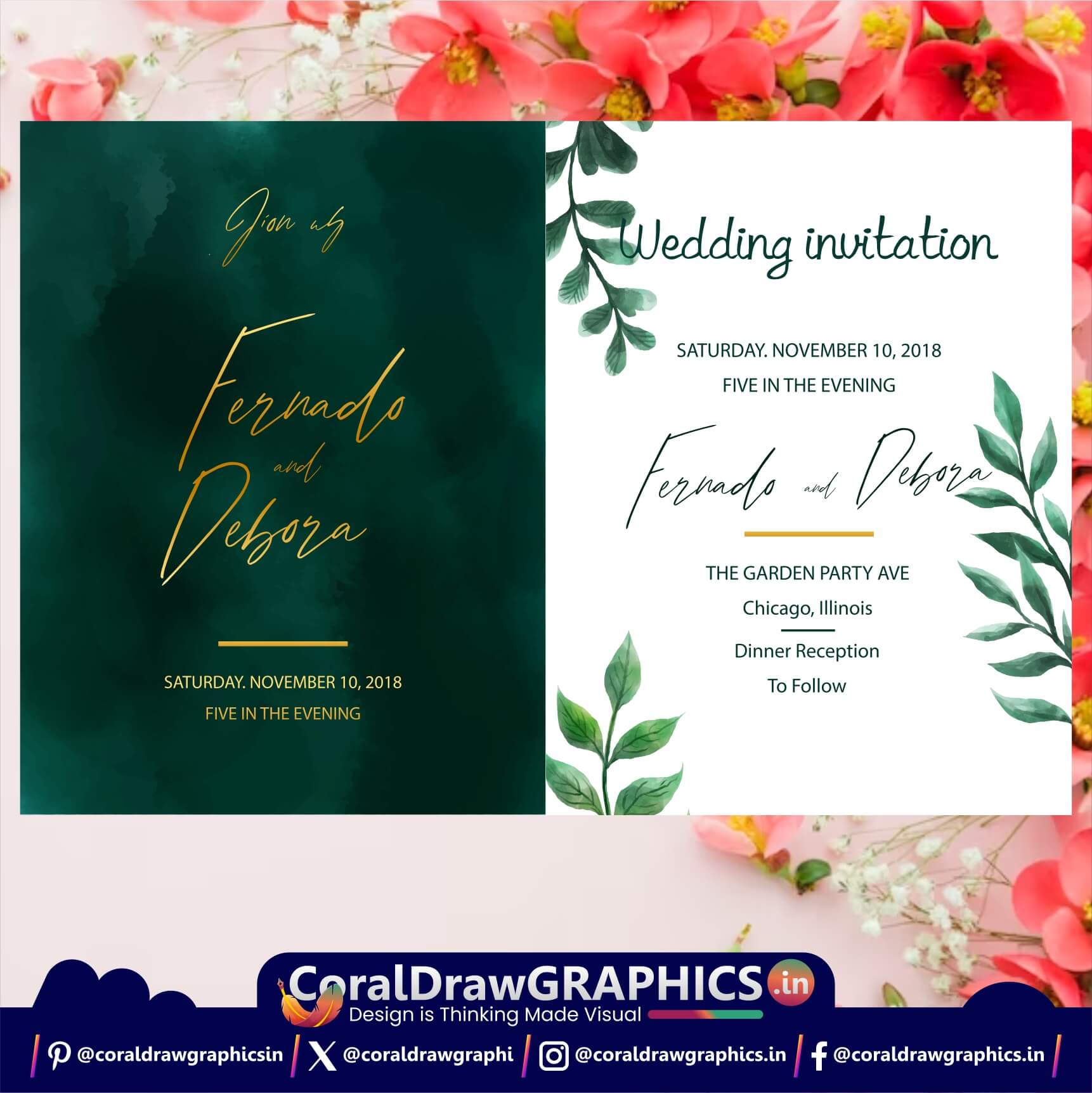Wedding Card Templates Contrast Design Leaf Decor
Designing wedding card templates involves creating visually appealing and personalized designs that reflect the couple’s style and the theme of the wedding. Here’s a detailed guide on various aspects of wedding card template design:
- Size and Format:
- Determine the size and format of the wedding card. Common sizes include 5×7 inches, but it can vary. Choose a format that suits the overall design and layout.
- Color Palette:
- Select a color palette that complements the wedding theme. Consider the couple’s preferences and the overall mood they want to convey—traditional, modern, vintage, or thematic.
- Typography:
- Choose fonts that are elegant and easy to read. Mix script and serif/sans-serif fonts for a balanced look. Ensure that the font size is appropriate for readability.
- Graphics and Illustrations:
- Incorporate meaningful graphics or illustrations that represent the couple or the wedding theme. Common elements include flowers, rings, hearts, or personalized illustrations.
- Background Design:
- Decide on the background design, whether it’s a solid color, a subtle pattern, or an image. Make sure the background complements the overall aesthetic of the card.
- Personalization:
- Add personal touches such as the couple’s names, wedding date, and a meaningful quote or message. Consider incorporating monograms or symbols that are significant to the couple.
- Imagery:
- Include high-quality images of the couple, engagement photos, or other relevant pictures. Ensure the images are well-edited and enhance the overall visual appeal.
- Paper and Print Quality:
- Consider the type of paper for printing—glossy, matte, or textured. The print quality should be high to bring out the details of the design. Discuss printing options with the couple or the printing service.
- Envelope Design:
- Design matching envelopes that complement the wedding card. Include the same color scheme, fonts, or graphics to create a cohesive look.
- Information Layout:
- Organize the information in a clear and logical layout. Include details such as the ceremony venue, date, time, dress code, and RSVP information. Ensure that the essential details are easily accessible and stand out.
- Printing Techniques:
- Explore various printing techniques such as embossing, foil stamping, or letterpress to add a touch of luxury to the design. Discuss these options with the couple and the printer.
- Theme Consistency:
- Ensure that the design is consistent with the overall wedding theme. If the wedding has a specific theme (e.g., beach, vintage, rustic), incorporate elements that resonate with that theme.
- Mockup and Review:
- Create a mockup of the wedding card template and review it with the couple. Make any necessary revisions based on their feedback before finalizing the design.
- Digital Version:
- Consider creating a digital version of the wedding card for online invitations. This can include a website link, QR code, or downloadable PDF.
Remember, the key to a successful wedding card template design is collaboration with the couple to understand their vision and preferences. Attention to detail and a thoughtful design process will result in a beautiful and memorable wedding card.
Free Download Editable File
File size: 3.67 MB
21 downloads






One Response
Truck with Container Towing Goods Icon 3D Sketch